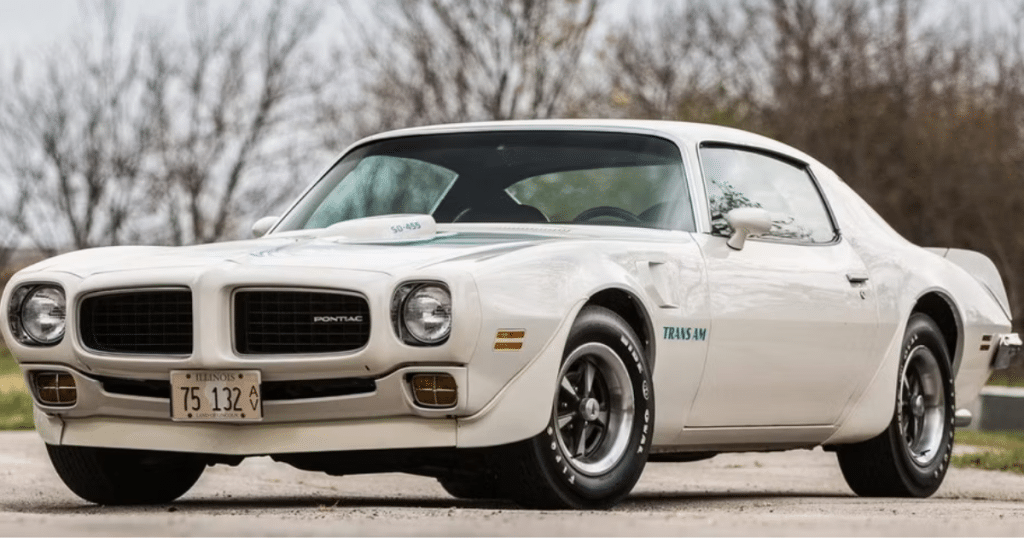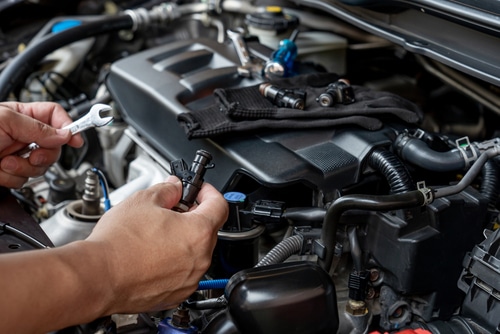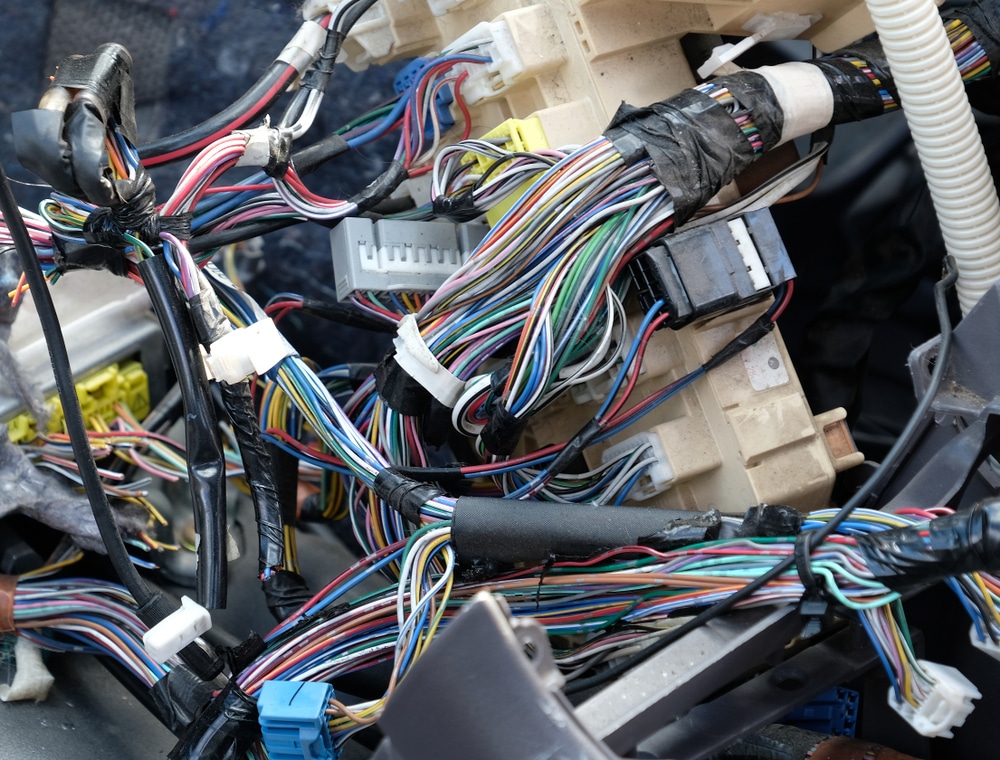Is your car doing its best impression of a washing machine on spin cycle when you’re stopped at a red light? Don’t worry, you’re not alone. Many drivers experience this unsettling phenomenon where their vehicle shakes like a leaf at idle but magically smooths out once they hit the gas.

The most common culprits behind this Jekyll and Hyde behavior are worn motor mounts, fouled spark plugs, or a faulty idle control valve. These issues can cause your engine to vibrate excessively when it’s not under load, but the vibrations often disappear once you’re cruising down the road.
Before you start sweating about expensive repairs, take heart. Sometimes the fix is as simple as tightening a loose gas cap or replacing a worn belt. But if you’re not mechanically inclined, it’s best to leave the detective work to the pros. They’ve got the tools and expertise to diagnose your car’s case of the shakes and get you back to smooth sailing in no time.
Key Takeaways
- Car shaking at idle often stems from engine or mounting issues
- Simple fixes like tightening loose components can sometimes resolve the problem
- Professional diagnosis is recommended for persistent shaking issues
Common Causes of Idle Car Shakes
When your trusty steed starts shimmying at stoplights, it’s trying to tell you something. Let’s dive into the usual suspects that make your car do the jitterbug while it’s supposed to be standing still.
Faulty Ignition Components
You know that spark in your relationship? Well, your car needs it too. Worn-out spark plugs are often the culprits behind a shaky idle. These little firecrackers are responsible for igniting the fuel in your engine.
When they’re past their prime, they can cause misfires, making your car shake like it’s had one too many espressos. If you can’t remember the last time you changed your spark plugs, it might be time for a fresh set.
But don’t stop there. Check your ignition coils and wires too. These components work hand in hand with the spark plugs. If they’re on the fritz, your engine might misfire, causing that annoying shake.
Problems in the Fuel System

Your car’s fuel system is like its circulatory system. When it’s clogged, things get shaky. A dirty fuel filter can restrict fuel flow, making your engine sputter and shake at idle.
Fuel injectors can also be troublemakers. When they get gunked up, they can’t spray fuel properly. This uneven fuel distribution can cause your engine to run rough and shake.
Don’t forget about the fuel pump. If it’s not delivering fuel at the right pressure, your engine might shake like a leaf in the wind. Keep an ear out for a whining noise from your fuel tank – it could be your pump crying for help.
Air Supply Issues
Your engine needs the right mix of air and fuel to run smoothly. A clogged air filter can throw off this delicate balance, causing your car to shake at idle.
The idle air control valve is another potential troublemaker. This little gizmo controls the engine’s idle speed. If it’s stuck or dirty, your engine might rev up and down on its own, causing a noticeable shake.
Check your mass airflow sensor too. This device tells your car’s computer how much air is entering the engine. If it’s dirty or faulty, it can cause all sorts of drivability issues, including a shaky idle.
Engine Mounts Giving Up the Ghost
Ever feel like your car is trying to escape from under you at a red light? Worn-out engine mounts might be the reason. These rubber cushions keep your engine in place and absorb its vibrations.
When they wear out, they can’t do their job properly. This lets the engine move around more than it should, causing shaking that you can feel throughout the car.
Check for visible cracks or breaks in the mounts. If you see any, it’s time for replacements. Remember, replacing engine mounts isn’t a DIY job unless you’re really handy. It’s often best left to the pros.
Steering and Suspension Insights

When your car shakes at idle but smooths out while driving, the culprit might be lurking in your steering or suspension. These systems play crucial roles in your vehicle’s stability and handling.
Wheel Woes and Alignment Angst
Ever feel like your car’s doing the cha-cha at a stoplight? Your wheels might be throwing a tantrum. Wheel alignment issues can cause your car to shimmy and shake when you’re not moving.
Think of it like a toddler’s temper tantrum – it’s worst when you’re standing still. But once you get rolling, things calm down. That’s because the forward motion helps stabilize those misaligned wheels.
To check if alignment’s your issue, take a peek at your tires. Are they wearing unevenly? That’s a dead giveaway. Time to book a date with your friendly neighborhood alignment specialist!
Brake System Blunders
Your brakes aren’t just for stopping – they can be shaky troublemakers too! Warped brake rotors are often the prime suspects in the case of the mysteriously shaking car.
Picture this: your rotors are like vinyl records. When they get warped, it’s like trying to play a scratched LP. The result? A whole lot of vibration.
Here’s the kicker – you might feel this shake more when you’re idling because there’s nothing else to mask it. Once you’re cruising, other vibrations can hide the brake-induced shimmy.
If your brake pedal feels like it’s doing the rumba under your foot, it’s time to get those rotors checked. Your mechanic might be able to resurface them, or you might need new ones altogether.
The Electrical Ecosystem and Engine Efficiency

Your car’s electrical system is like a miniature power grid, keeping everything humming along. When it’s out of whack, you might feel those pesky vibrations at idle. Let’s dive into the nitty-gritty of what could be causing your four-wheeled friend to shimmy and shake.
Battery and Connections
Ever tried dancing with loose shoes? That’s what your engine feels like with loose battery cables. These cables are the lifeline of your car’s electrical system. If they’re not snug, your engine might stutter like it’s had one too many.
Check those connections, folks! A quick tighten might just solve your shaky situation. And while you’re at it, give your battery a once-over. A weak battery can make your car act like it’s had too much caffeine.
Remember, a healthy battery is a happy engine. If your battery’s looking a bit worse for wear, it might be time for a swap. Your engine will thank you with a smooth purr instead of a shaky growl.
Sensors and Circuits
Your car’s brain relies on a network of sensors to keep things running smoothly. The throttle position sensor is like your car’s taste buds, telling it how much fuel to gobble up. If it’s on the fritz, your idle might get jittery.
Don’t forget about the oxygen sensor! This little gizmo is like a nose for your exhaust. A faulty one can make your engine run rich or lean, causing that annoying shake at idle.
The idle air control valve is another potential troublemaker. It’s like a mini doorman for air, and if it’s not doing its job, your idle might get rough.
If you’re feeling brave, grab an OBD2 scanner and play detective. It might just point you to the culprit causing your car’s idle dance. Remember, a smooth-running engine is all about good communication between these electrical components.
Dealing with Diagnostic Trouble Codes
When your car’s acting up, those pesky codes can be your best friend. Let’s dive into how to decode these automotive mysteries and get your ride running smooth again.
Check Engine Light Chronicles
Ah, the dreaded check engine light. It’s like your car’s way of saying, “Hey buddy, we need to talk.” Don’t panic! Sometimes it’s as simple as a loose gas cap. Give it a good twist and see if that does the trick.
If you’re catching a whiff of that unmistakable ambient gas odor, double-check that cap. It might be trying to tell you something important.
Remember, that little light isn’t just there to make your dashboard look pretty. It’s a crucial warning system that could save you from bigger headaches down the road.
Utilizing OBD2 Scanners
Now, let’s talk about your new best friend: the OBD2 scanner. This nifty gadget is like a translator for your car’s secret language. You can pick one up for less than the cost of a fancy dinner.
Plug it in, and voila! You’ll get a code that tells you exactly what’s got your car’s undies in a bunch. It might be P0300 for misfires or P0171 for a lean fuel mixture.
Don’t worry if it sounds like gibberish at first. A quick Google search will help you decipher the code. It’s like being a car detective, only with less trench coats and more grease under your fingernails.
Remember, knowledge is power. With these codes in hand, you can strut into your mechanic’s shop like you own the place. Or, if you’re feeling brave, tackle the problem yourself. Either way, you’ll save time and money by pinpointing the issue.
Under the Hood: Miscellaneous Malfunctions
When your car shakes at idle but smooths out while driving, the culprit often lurks in the engine bay. Let’s pop the hood and explore some common troublemakers that might be giving your ride the jitters.
Vacuum System and Seals
Your engine’s vacuum system is like its respiratory tract. If it’s not airtight, you’re in for a bumpy ride. Vacuum leaks can cause a rough idle that mysteriously disappears once you hit the gas.
Check those vacuum hoses, folks! They’re like the arteries of your engine, and a tiny crack can cause big problems. Give them a once-over and replace any that look worn or cracked.
Don’t forget about the throttle body. A dirty throttle body is like a clogged nose for your engine. It can’t breathe right, leading to an unsteady idle. A quick cleaning might just be the cure for your car’s case of the shakes.
Belts and Bearings
Belts and bearings, oh my! These unsung heroes keep your engine purring… or shaking if they’re worn out.
Your serpentine belt is the multitasker of the engine world. If it’s loose or worn, it can cause vibrations that smooth out at higher speeds. Give it a good look and listen for any squealing noises.
Don’t forget about the timing belt. A bad timing belt can throw off your engine’s rhythm faster than a tone-deaf drummer. If your car’s getting up there in miles, it might be time for a replacement.
Worn-out bearings can also cause vibrations. They’re like the joints of your engine, and when they go bad, things get shaky.
Idle Speed and Stability
Idle speed issues can turn your smooth ride into a bucking bronco at stoplights. A defective idle speed control can cause your RPMs to fluctuate wildly at idle.
Your car’s computer is supposed to keep things steady, but sometimes it needs a little help. Check for any error codes that might point to a malfunctioning sensor.
Dirty oil can also cause idle instability. It’s like trying to run a marathon on a diet of junk food – your engine just can’t perform at its best. Keep up with those oil changes, and your engine will thank you.
Remember, a stable idle is a happy idle. If your car’s still doing the shake, rattle, and roll, it might be time to call in the pros.
Frequently Asked Questions
Car troubles can be as mysterious as they are frustrating. Let’s dive into some common head-scratchers that might have you puzzled about your vehicle’s sudden desire to shake, rattle, and roll.
What could be causing my car to tremble like a leaf at stoplights?
You might be dealing with worn spark plugs or a clogged fuel injector. These little troublemakers can make your car quiver like it’s seen a ghost.
Don’t worry, though. A quick trip to your friendly neighborhood mechanic can usually sort this out faster than you can say “stop shaking, you bucket of bolts!”
Is it normal for my car to turn into a shaking mess when the AC kicks in at a standstill?
Ah, the ol’ AC shake-down! While it’s not ideal, it’s not uncommon. Your engine might be struggling to handle the extra load from the AC compressor.
It could be time to give your idle control system a once-over. Or maybe your engine mounts are just feeling a bit lazy. Either way, it’s worth getting checked out before your car turns into a full-blown maraca.
Should I be worried when my car acts like a smooth operator on the highway but throws a fit at idle?
Well, you shouldn’t panic, but don’t ignore it either. This Jekyll and Hyde behavior often points to issues that only show up at low RPMs.
Dirty fuel injectors or a vacuum leak could be the culprits. They’re like sneaky gremlins that only come out when your car’s not moving. Time for a little detective work!
Can a check engine light be linked to my vehicle’s impression of a vibrating phone at red lights?
You bet your dipstick it can! That little light is your car’s way of saying, “Hey, something’s not quite right down here!”
It could be misfiring cylinders or an oxygen sensor throwing a tantrum. Don’t ignore it – your car’s just trying to have a heart-to-heart with you.
Why does my car suddenly think it’s a massage chair when idling in neutral?
Sounds like your car’s trying to moonlight as a spa service! This could be your motor mounts deciding they’ve had enough of holding your engine steady.
Or maybe your idle speed control valve is taking an unscheduled break. Either way, it’s time to show your car who’s boss and get it checked out.
What’s up with my vehicle shaking its booty when stopped with my foot on the brake?
Your car’s got rhythm, but this ain’t the time to bust a move! This shimmy could be due to warped brake rotors or a sticking brake caliper.
It might also be your engine’s way of saying it’s not happy with its current idle speed. Time to put on your detective hat and get to the bottom of this automotive dance party!
